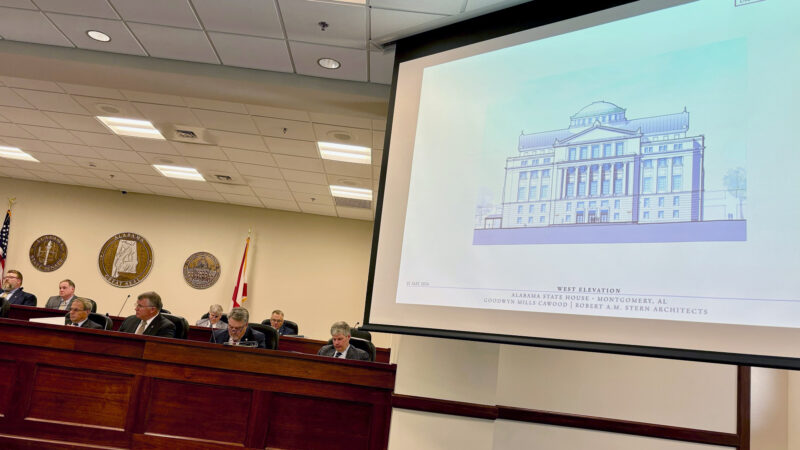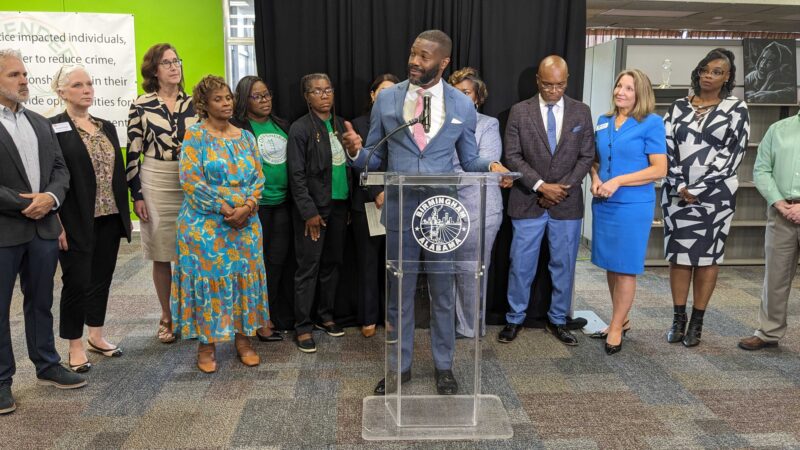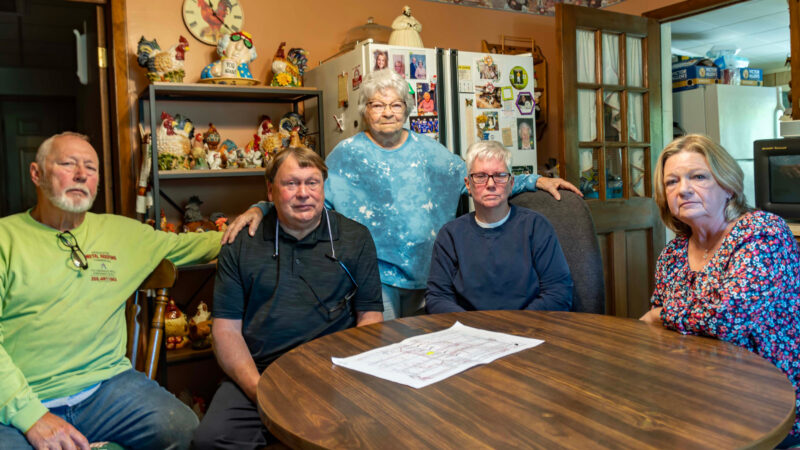EarFlims: To Sleep To Dream
You know how people often say the book is better than the movie because you can create your own pictures? The same thing is true for audio. A new show with its American debut Tuesday at UAB’s Alys Stephens Center puts that notion to the test.
To Sleep to Dream is a production of the United Kingdom-based EarFilms. It’s like a feature-length movie told only with sound.
Daniel Marcus Clark is founder of the company. Clark had been a storyteller and a composer, but he felt there was something missing from most audio drama. He wondered, what if you made sound the primary storyteller?
“What can you tell about a character by the way they breathe, by the way they enter a room, by the way they sit, by the way they hold themselves?” Clark asked. “So aside from dialogue, aside from narration, how much of a story can we tell just using sound?”
So Clark wrote To Sleep To Dream, a tale of a future, dystopian world where one corporation controls everything and dreams are illegal.

EarFlims founder Daniel Marcus Clark will narrate the show live from this podium. He likes to deliver the lines with his eyes closed so he can experience the show as the audience does.
To appreciate the scope of production, it helps to understand the technology. You’re probably familiar with stereo sound. That’s two speakers. A typical surround sound system will have five. This set up?
“There’s 21 speakers in the set up,” said Clark.
They’re placed like a dome around the audience. So they can make the audio appear to move around and above the audience. It’s a 3-D sound system.
“It gives a kind of, a much richer kind of feeling,” said Clark. “It’s more akin to the way that we listen in the natural world.”
The other thing to consider is the number of tracks. A typical radio story may have two to four tracks — the reporter’s voice, the sound bites, and some other sound gathered from the scene. A recording of a band may have thirty to fifty tracks.
In To Sleep to Dream there are more than 6,000 audio tracks.
“Actually that’s six thousand tracks of audio before we put score in and actors,” said Clark.
One other important detail — the audience is blindfolded. There’s nothing to do but listen and imagine.

EarFilms’ spectral sound director Chris Timpson examines his laptop as he calibrates the speakers for the show.
“You feel like you’re in the middle of a film as opposed to watching a film,” said Eric Essex, Director of Programming at the Alys Stephens Center.
He was part of a group that saw an excerpt of To Sleep To Dream at an industry preview in New York. He was fascinated by the varied experiences people had.
“You know, some people saw the film in color,” said Essex. “Some people saw in black and white. Some people saw it in first person and some people saw it as if you were watching a film on the screen.”
From there, the Stephens Center invited EarFilms to bring the show to Birmingham for its U.S. debut. Essex says that’s an opportunity to become your own filmmaker.
“You’ve got all the audio,” said Essex. “The storyline is there. Use your mind and your imagination to create your own visuals of this film.”
That is, if that’s what you’ve been dreaming of.
Pro-Palestinian demonstration draws counter-protest at University of Alabama
Students gathered demanding the school call for a permanent and immediate ceasefire and to push the school to sever ties with defense contractor Lockheed Martin.
A new Statehouse and related projects will cost about $400 million
The Alabama Legislative Council, a 20-member panel comprised of legislative leaders and their appointees, approved the construction of the new Statehouse last year. The panel was given an update on the project on Wednesday.
New pilot program will offer housing, resources to people leaving prison
The Birmingham Reentry Alliance will provide wrap around services to dozens of men and women adjusting to life after prison.
Alabama committee advances ban on LGBTQ+ pride flags in classrooms
The Senate Education Policy Committee voted 5-2 for the House-passed bill, putting the proposal in line for a possible final passage in the last four days of the legislative session.
A New Orleans garden paid hundreds of dollars in fees for a sewer that doesn’t exist
Galvez Garden owner Lissie Stewart has been fighting the New Orleans Sewerage and Water Board over inaccurate billing for years.
Alabama coal mine keeps digging after hundreds of fines and a fatal explosion
Following the death of a grandfather, Crimson Oak Grove Resources has left a community afraid for their homes and lives. An expert warns one resident may need to evacuate her home while she still can.







